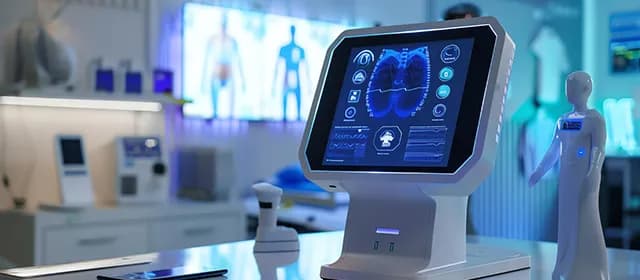Agglutination is a process that happens after antigens are merged with their corresponding antibody, referred to as agglutinin. This method is widely used for the grouping of blood.
Latex agglutination testing is also referred to as latex fixation. It is a diagnostic test that clinical laboratories use to detect the presence of specific antibodies and antigens.
Various body samples such as cerebrospinal fluid, urine, saliva, and blood can be collected as clinical samples based on what type of sample is required to run the test. Moreover, several types of latex agglutination test kits are available that help healthcare providers identify the presence of various antigens and antibodies.
A report by Kings Research highlights the global latex agglutination test kits market size is projected to reach $2.91 billion by 2030, growing at a CAGR (compound annual growth rate) of 6.45% between 2023 and 2030.
In this blog, let us have a look at the different types of latex agglutination test kits and their uses in clinical settings.
Classification of Latex AgglutinationTests
Following are the two segments the latex agglutination test (LAT) can be classified into depending on their detection processes:
1. Latex Agglutination Test (LAT) To Detect Antibodies
LAT for antibody detection can be categorized as a passive agglutination test. This test type has a coating on the surface of the latex beads with the particular antigen. It is utilized to determine the presence of antibodies in the given sample. The lab technicians mix the samples like serum or other body fluids with the latex beads coated with antigens. If the sample has antibodies present in them, it will bind to the antigen on the beads. This results in the clumping or agglutination of the latex beads. It serves as a positive confirmation of the existence of antibodies in the sample.
2. Latex Agglutination Test (LAT) To Detect Antigen
LAT for antigen detection is also known as the reverse Passive Agglutination Test. This diagnostic approach includes coating of the surface of latex beads with a particular antibody. This test allows us to determine the presence of antigens in the given test sample. The lab technicians mix the sample with the antibodies coated on the latex beads. If there are antigens present in the test sample, it will bind to the antibody present on the latex beads. As a result of the binding, the latex beads will become clumped or agglutinated. It serves as a positive indication of the antigen’s presence in the test sample.
The above-mentioned are the two classifications of latex agglutination tests that offer insight into diagnostic data in different scenarios. The antibody detection LAT is beneficial while investigating the existence of particular antibodies in the test sample. It assists in indicating the past or present immune response to a specific antigen.
The antigen detection LAT offers valuable information, such as the existence of a particular antigen in the blood sample. It will indicate the current infection and the existence of foreign substances in the patient’s body.
The two varieties of LATs are beneficial because they are simple, highly sensitive, and offer quick results. These tests are widely used in professional clinical laboratories to detect the presence of analytes. Latex agglutination test kits play a crucial role in the diagnosis and management of infectious diseases and other immune-related conditions.
What are the Different Types of Latex Agglutination Test Kits and their Uses?
Following are the different types of LAT kits available in the market and their usage in the clinical setting:
1. BactiStaph Latex Agglutination Test Kits
BactiStaph LAT kits are primarily used for quick detection of Staphylococcus aureus bacteria directly from clinical specimens. Here are a few key uses of these test kits:
- These test kits are helpful in the detection of Staphylococcus aureus by agglutinating with particular antibodies against this bacterium.
- Clinical laboratories leverage BactiStaph LAT kits to diagnose infections like skin infections, wound infections, and more chronic systemic infections caused by Staphylococcus aureus.
- It is a test kit that offers quick results, usually in a few minutes. Hence, healthcare professionals can make quick, informed decisions about the most effective treatment plan.
- A few BactiStaph latex agglutination test kits are designed for usage at the point of care. It enables healthcare providers to identify the Staphylococcus aureus infections without waiting for the culture results from a lab.
- Microbiology laboratories can use BactiStaph LAT kits for quality control purposes. It ensures the accuracy and reliability of bacterial identification methods.
BactiStaph latex agglutination test kits find a vast range of applications in clinical microbiology. These test kits are popular for their speed, simplicity, and accuracy in detecting Staphylococcus aureus infections.
2. Cryptococcal Antigen Latex Agglutination Test kits
Cryptococcal antigen LAT kit is used in medical diagnostics to detect the presence of cryptococcal antigen in biological samples. The test uses serum or cerebrospinal fluid (CSF) as clinical samples to execute the test. The following are its key uses:
- Health care professionals prescribe a Cryptococcal antigen LAT to diagnose cryptococcal infections. This test helps determine the cryptococcal infections, which are often caused by Cryptococcus neoformans or Cryptococcus gattii fungi. These infections can affect immunocompromised individuals, such as those living with HIV/AIDS, or occasionally immunocompetent individuals.
- For HIV-infected patients with a lower CD4 count, this test is used to detect cryptococcal infections at an early stage and avoid complications.
- After diagnosis of the infection, a cryptococcal antigen latex agglutination test kit can assist in tracking the effectiveness of antifungal treatment. It tracks the changes in cryptococcal antigen levels over time. A decline in antigen levels indicates a response to treatment.
- For patients with cryptococcal meningitis, the test can help evaluate the severity of the infection and predict outcomes based on antigen levels in CSF.
- Cryptococcal antigen LAT kits are widely used in research studies and epidemiological surveys to understand the prevalence and distribution of cryptococcal infections in different populations.
Cryptococcal antigen latex agglutination test kit plays an important role in the timely diagnosis, management, and monitoring of cryptococcal infections. It is beneficial in settings that have restricted resources and where quick diagnostic tools are required.
3. Salmonella Latex Agglutination Test Kit
Salmonella LAT kits are helpful for the rapid detection of Salmonella antigens in clinical samples, food samples, and environmental samples. Here are a few specific uses of these test kits:
- In clinical settings, salmonella latex agglutination test kits are used to detect Salmonella antigens in patient samples. The stool or blood of the patient is taken to diagnose salmonellosis, which is an infection caused by Salmonella bacteria.
- In the food industry, these kits are used to test food products for the presence of Salmonella contamination. This helps ensure food safety and prevent outbreaks of foodborne illness.
- Salmonella latex agglutination tests help in environmental monitoring, such as testing water sources or surfaces in food processing facilities. It is beneficial to detect potential contamination of the natural resources with Salmonella bacteria.
- Salmonella LAT kits are also widely used in veterinary medicine to diagnose Salmonella infections in animals, specifically in livestock and pets.
The test kits offer a fast and reliable approach for detecting Salmonella antigens, facilitating prompt action to control outbreaks and ensure public health safety.
Wrapping up
Diseases such as N. meningitidis, H.influenzae, or Hepatitis B can be detected by using latex agglutination test kits. These LAT kits are extensively used in clinical laboratories to detect the presence of antigens and antibodies. The seamless visualization because of the latex beads' size, swiftness, simplicity, affordability, and lower cross-reactivity make these test methods beneficial in the diagnosis of various pathogens.




